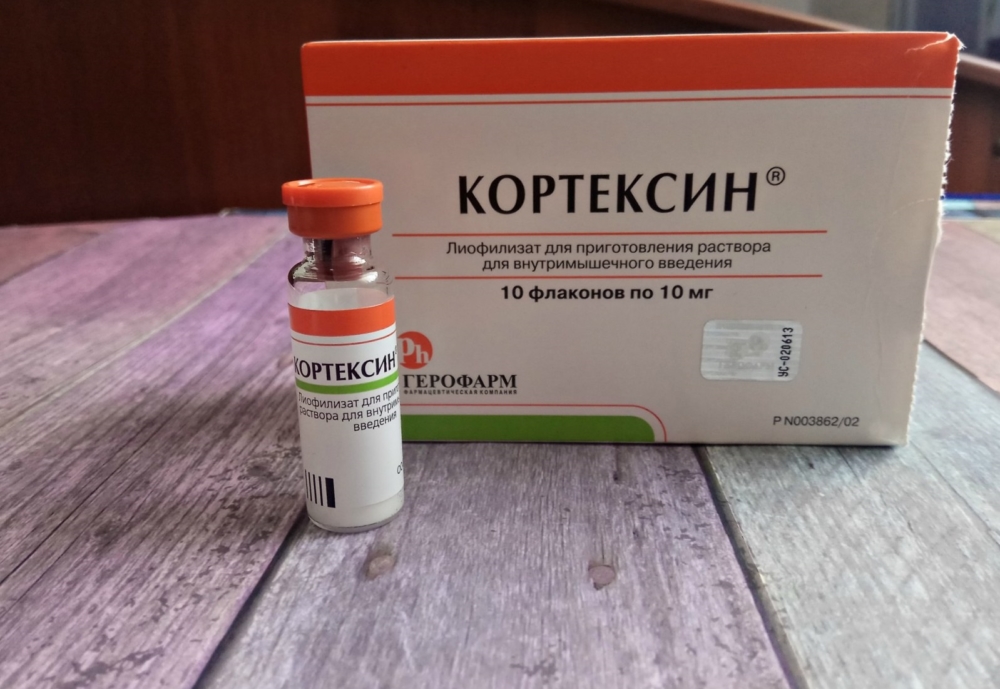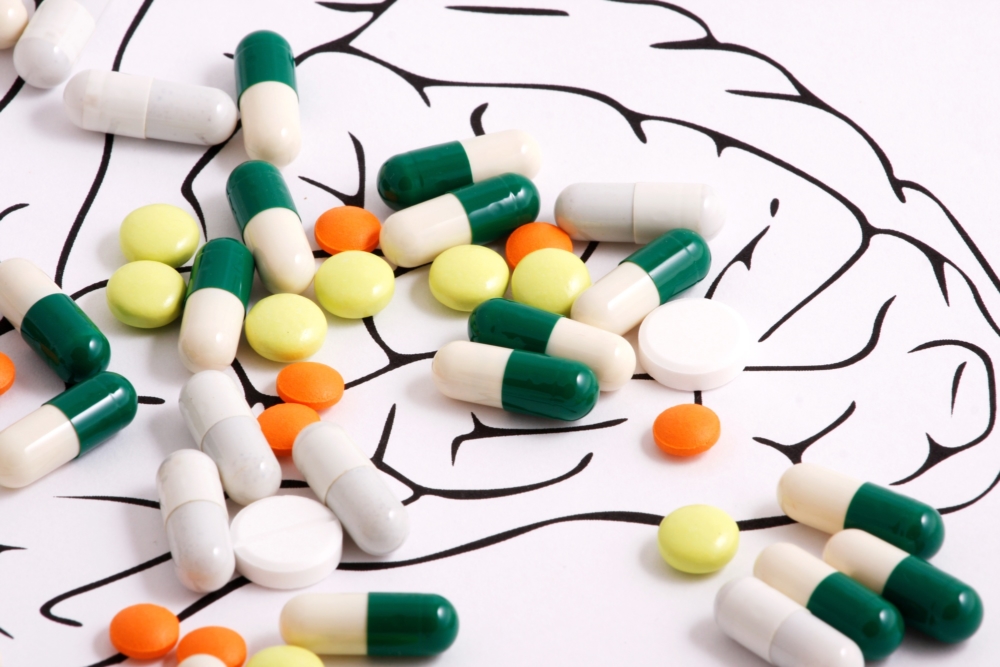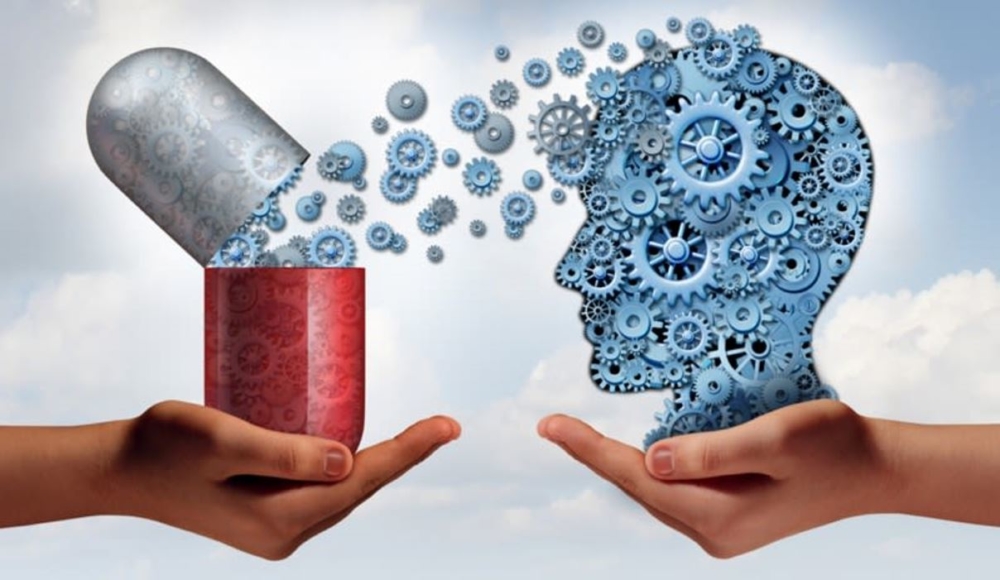In the case of an excessive load on the neurons of the brain or a previous lesion of its tissues, injections of Cortexin can be prescribed. They help repair damaged areas and more easily withstand stress. The drug is suitable not only for adults, but also for children with pathologies of the central nervous system.
Material Content:
The composition of the drug
The effect of Cortexin is due to a complex of fractions of polypeptides soluble in water. Their amount in 1 bottle of the product is 10 mg. As a stabilizing component, 12 mg of glycine is added to the medicine.
Cortexin is produced as a yellowish or white lyophilisate. This nootropic drug also has antioxidant and tissue-specific activity. It also acts as a neuroprotector, protecting the nervous system from the harmful effects of chemical, physical or biological factors.
The active components of Cortexin pass through the blood-brain barrier and act directly on brain cells. As a result, cognitive functions (attention, memory, learning ability) are improved, resistance to stress factors is increased, toxic effects of chemicals on nerve fibers are reduced, and resistance to hypoxia is enhanced. The drug establishes metabolic processes, which accelerates tissue repair after damage.
Indications for the use of Cortexin injections
The drug affects the brain in several directions at once, so Cortexin injections are prescribed for a whole list of diseases. These include:
- epileptic activity of unspecified genesis;
- asthenic disorder of organic origin;
- Cerebral palsy;
- speech and language disorders;
- inflammation of the meninges (myelitis, encephalitis, encephalomyelitis);
- learning disabilities;
- various types of amnesia;
- pathology of the vessels of the skull of an unspecified nature;
- stroke;
- fatigue;
- encephalopathy of unspecified etiology;
- complications after a stroke;
- cognitive impairment;
- low rates of development in children;
- traumatic brain injury and complications after it;
- acute cerebrovascular accident.
In the presence of one of the indications for use, Cortexin is considered the preferred drug. A neurologist appoints this tool or its analogue. The dosage is selected individually, based on the patient's condition, his age, medical history and the present disease.
Instructions and dosage for adults and children
In the instructions for use attached to the medicine, the average recommended doses are indicated. Cortexin is administered intramuscularly, having previously made a solution of 1-2 ml of 0.5% novocaine (procaine) mixed with an isotonic solution or water for injection. The powder must be diluted carefully, leaning the needle against the edge of the vessel so that foam does not occur.
Cortexin for adults is administered once a day at 10 mg or twice (in the morning and afternoon) with a stroke. The course of treatment is 10 days. You can repeat it after 3-6 months. After a heart attack, the break is reduced to 10 days.
Use Cortexin for children weighing up to 20 kg should be 5 mg per dose. This is equal to half the vial or solution for injection. With a body weight of more than 20 kg, treatment is carried out according to the scheme of adult patients.
During pregnancy and lactation
While carrying a child, the use of Cortexin is not recommended. This is due to the lack of clinical trials in this population. If treatment with the drug is required during breastfeeding, it should be discontinued, since there are no data on the safety of use during this period of time.
Drug interaction
Cortexin does not interact with other medicines. It can only reduce their toxic effect on the brain, which does not affect the effectiveness of their treatment. Therefore, it can be combined with any medication without fear of undesirable reactions.
Contraindications, side effects and overdose
Cortexin does not cause specific side effects. But it can provoke an allergy to the components of the drug. When typical symptoms of this condition appear (rash, itching, redness, anaphylaxis), it is worthwhile to consult your doctor about replacing the drug with an analogue.
Contraindications include hypersensitivity to substances in the composition of the drug. Cortexin overdose has not been reported. But you should not exceed the recommended norm, since the use of a larger amount of the drug will not have a positive effect, but will increase the consumption of the drug.
Similar drugs
Among nootropic drugs, there are a sufficient number of Cortexin analogues. These include aminalon. It contains gamma-aminobutyric acid (GABA) and has a tableted appearance. This medicine also has an anticonvulsant and mild sedative effect, and also activates the brain. But it can not be used by children because of the form of release and the risk of side effects.
Actovegin also refers to nootropics. It is produced in the form of a solution that is administered both intramuscularly and intravenously. The medicine is prepared from calf blood, removing protein alien to humans from it. The drug is less effective in case of discirculatory encephalopathy and chronic fatigue, but it is allowed for pregnant and lactating women.
Glycine is the most budgetary and well-known analogue of Cortexin.It contains the microencapsulated amino acid glycine, which has a mild sedative and neuroprotective effect. The drug is safe for children, but is available in the form of tablets that must be kept under the tongue. Therefore, its use for a child under 7 years old is almost impossible.
Lucetam is an analogue based on piracetam. It is administered intramuscularly or intravenously. The medicine has a more pronounced effect in relation to neuropsychic functions, but has an extensive list of contraindications. The drug with the same active substance, but in the form of capsules and tablets for oral administration, Nootropil. Their Russian-made generic is called Piracetam and can be used by any of the above methods, as it is available in several dosage forms.
Cerebrolysin combines a neuroprotective and nootropic effect. It also helps repair damaged neurons. The spectrum of indications for this drug is much wider than that of Cortexin. It is also approved for use in children from birth. In some cases, medications are prescribed at the same time. It is not recommended to use them for pregnant and lactating women.
Ceraxon differs from Cortexin in composition, but is similar in action. Its effect is stronger with cerebral edema, therefore, it is preferred to treat this pathology. But it is not used for small children. The advantages of this analogue include a shorter course of treatment.
Among the nootropic drugs, Cortexin is considered a leader in the treatment of children and the correction of cognitive impairment. It has almost no side effects and contraindications, for which doctors and patients highly appreciate it. Among the analogues, you can choose a medicine with a similar effect, but it is not recommended to make a replacement on your own because of the difference in active substances and dosages.
















